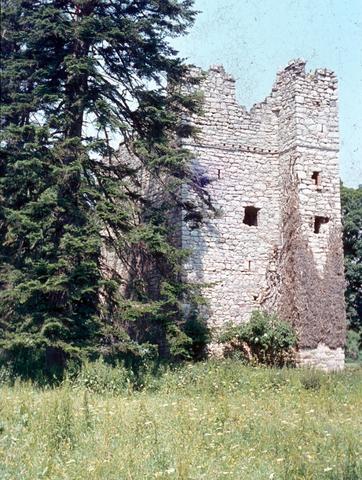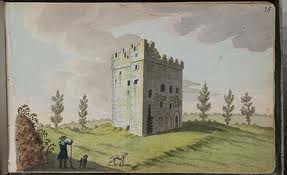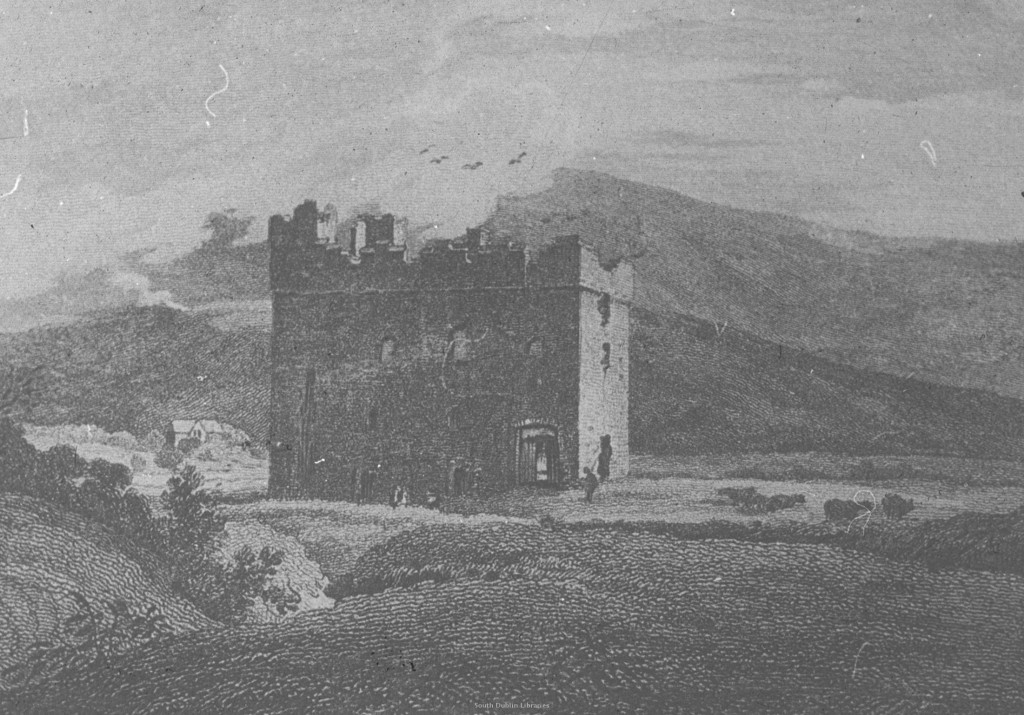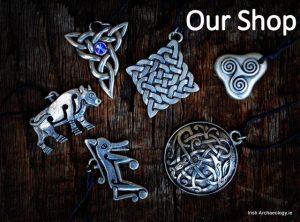
The ruined and overgrown remains of Kilgobbin castle stand in the shadow of the Dublin Mountains. Located in an area that was on the very periphery of English control for much of the medieval period, the castle was once an important bulwark against Irish raids. It was built by the Walsh family sometime in the 15th century, with the impetus for its construction probably being a subsidy issued in 1429, which granted £10 to anyone who built a castle or tower within the Dublin Pale.
The Walshs were important marcher lords and owned extensive lands in south County Dublin. To protect these estates they built a string of castles including Balally, Kilgobbin, Carrickmines, Brennnastown, Shanganagh, Corke and Old Connaught (Goodbody 1993). However, the threat of attack from the Irish remained constant and one of the earliest references to Kilgobbin dates to 1476, when the castle was sacked by the marauding O’Byrnes (O’Byrne 2002).
Today the tower-house at Kilgobbin survives to three storeys in height and its thick granite walls contain numerous arrow slits. The ground floor ceiling was originally vaulted and square joist holes for supporting wooden floor levels are visible higher up in the internal walls. A service tower on southeast corner of the castle contains a spiral staircase and also a garderrobe (toilet), while the entrance door is located in the western wall. Unfortunately, the eastern and northern walls are no longer standing having largely collapsed in 1832.

Some information about the castle’s former inhabitants is known as a number of their names are recorded. They include Morris Walsh (1482), his son Pierce (1509), John Walsh (1578), Edmond Walsh (1599) and Christopher Walsh (1615). In 1620 Patrick, son of John Walsh was in residence at the castle and at this time a court was held at Kilgobbin by order of the Exchequer (Ball 1905). At the start of the 17th century the Walshs were still in the ascendant and were described as ‘a large and ancient stock and as of men of note in the metropolitan county’, which was then ‘rich and plenteous in corn and cattle and inhabited by people of stately port and garb’ (Ball 1902). However, as is wont in Irish history things were soon to change.

Falling on hard times, the Walshs had to sell Kilgobbin to Sir Adam Loftus of Rathfarmham sometime prior to 1641. It was then rented to Mathew Talbot, an officer in the Irish confederate army. As a result the castle was to figure prominently in the initial stages of the Confederate Wars of the 1640s. This prolonged period of warfare saw the Old English and Irish rise up against a Protestant dominated government. In South Dublin it witnessed the Walshs joining forces with their historic enemies the O’Tooles and O’Byrnes to fight the government army.
On the 20 of January 1641 the war reached Kilgobbin, when a force of Government cavalry approached the castle with the intention of burning it and the surrounding village. They were taken by surprise by the rebels and in the ensuing fire-fight two of the horsemen were killed. The government troops were forced to retreat from the castle, allowing the defenders, who included two rebel leaders, Luke O’Toole and Hugh Byrne, to escape (1641 Depositions, Letter from Philip Bysse to his brother). However, this victory was short lived as the following year the South Dublin rebellion was crushed when they Walshs and their allies were defeated at the battles of Dean’s Grange and Carrickmines.
The demise of the Walsh family was mirrored at their ancestral home at Kilgobbin, where the castle slowly but inexorably turned into an ivy covered ruin.
References
Ball, F. E. (1902) A History of the County of Dublin, Volume I, Dublin
Ball, F.E. (1905) A History of the County of Dublin, Volume III, Dublin
Goodbody, R. (1993) On the border of the Pale: a history of the Kilgobbin, Stepaside and Sandyford areas, Pale Publishing, Dublin
O’Byrne, E. (2002) ‘Carrickmines and the Dublin marches’, in Sean Duffy (ed) Medieval Dublin IV, Four Courts Press, Dublin
Related posts
.



Do you know who the owner of Kilgobbin Castle is today?
Sorry I don’t Sami, Colm
Probably the Office of Public Works (OPW).